2013 was a tricky year for mobile operators in the Middle East and Africa as they struggled to maintain margins at previous highs. It was also the first full-year in which capex spending rebounded strongly for the first time since the start of the global economic recession in 2008, with CEOs having to act particularly strategically with respect to where to invest further resources 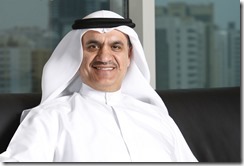
LTE networks promised much, and to a large degree have been delivering on the promise of delivering greater amounts of digital mobile services. However, this massive surge in mobile broadband capacity and usage is yet to have a discernible impact on mobile operators’ revenues, as they tussle in saturated markets in which their primary product – voice – has largely been commoditised.
The relatively slow pace of M&A activity that existed in 2012 persisted into 2013 with operators primarily looking inwards to cost efficiencies and savings for ways in which to maintain margins. It is a trend that is likely to persist for a while longer, up until conglomerate operators begin to consider mega-mergers that will reset the regional telecom spheres of influence.
So while 2013 was not a standout year with respect to headline-grabbing developments and initiatives, operators throughout the Middle East and Africa showed their maturity by focussing on internal systems and processes with the view to differentiating themselves as earnestly as possible from competitors in their teeming markets.
Note: CEOs who have not been in their positions since January 1, 2013 were not eligible for inclusion in this list.
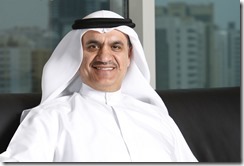 1 Ahmad Julfar, Etisalat Group
1 Ahmad Julfar, Etisalat Group
Rank in 2012: 4
For its part Etisalat Group, and its CEO Ahmad Julfar enjoyed a relatively low-key 2013 by the UAE telco’s standards. However the company pulled off arguably the deal of the year in the region with the US$5.3 billion acquisition of a controlling stake in Maroc Telecom, which catapults it to the top of 2013’s list
At the start of November, Etisalat announced it had signed a share purchase agreement with Vivendi for the acquisition of the French conglomerate’s 53 per cent stake in Itissalat Al Maghrib (Maroc Telecom).
Etisalat made a binding offer that valued each Maroc Telecom share at MAD92.6 (US$11.16), amounting to a consideration of €3.9 billion (US$5.27 billion) for Vivendi’s 53 per cent stake.
Earlier in the year Etisalat reported strong consolidated revenues during the second quarter, reached AED9.88 billion (US$2.7 billion) representing an increase of 20 per cent year-on-year and an increase of three per cent quarter-on-quarter.
A 20-year extension to its licence in Benin, massive network investment by its Saudi Arabia affiliate, Mobily, the introduction of m-commerce in Egypt, and the launch of an own-brand smartphone in Egypt were amongst the developments presided over by Julfar during the course of the year across the company’s footprint.
2 Nasser Marafih, Ooredoo Group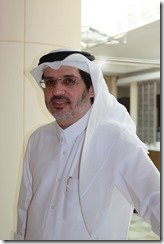
Rank in 2012: 1
At the start of 2013 Qtel Group under took a comprehensive rebranding that saw it unveiled as Ooredoo. The company also won one of two fiercely contested mobile licences in Myanmar, which offers huge potential and challenge in equal measure
In June it was announced that Qatar’s Ooredoo and Norway’s Telenor won licences to provide telecom services in Myanmar.
A wide range of companies had been lobbying hard to enter the market, despite the risks of rolling out costly networks in a country that was yet to pass a law to govern the sector.
Ooredoo said it planned to spend US$15 billion over the 15-year licence period, including operational and capital expenditure, licence fees, and taxes.
The winners were selected from a shortlist of 11 bidders, whittled down from more than 90 companies and consortia that had expressed interest in working in a fledgling market of 60 million people, where nine per cent at most have a mobile phone.
In March Qtel officially rebranded to Ooredoo in order to emphasise its core commitment to its customers and Qatari values, of caring; connecting; and challenging.
The operator did face negative pressure on its operating results during the period, though, reporting a plunge in Q313 profits as it was hurt by foreign exchange losses from its Indonesian subsidiary.
Ooredoo posted quarterly revenue that was down by 1.4 per cent at QAR8.5 billion (US$2.33 billion), while net profit fell by 58 per cent to QAR 337 million in Q3.
Excluding the Indosat impact, profits would have been flat year-on-year for the quarter.
Rank in 2012: 7
UAE telco Du enjoyed strong operational and financial performances during the course of 2013, with its CEO, Osman Sultan, remaining outspoken about the role operators can still play in the evolving telecom ecosystem
Du reported that its Q313 revenues were boosted by growth in both landline and mobile divisions, while net profit soared by 45 per cent year-on-year.
Mobile revenues rose by 9.7 per cent year-on-year to AED2.05 billion (US$558 million), while landline revenues rose by 8.9 per cent to AED439 million.
Net profit increased by 45 per cent to AED474 million (US$129 million).
Du’s mobile market share remained stable at 46.4 per cent, while in Q2 the telco announced it was awarding a special dividend payment to its shareholders amounting to AED 1 billion.
Speaking at an industry event in Dubai during the course of 2013, Sultan expressed he was of the opinion that mobile operators themselves should consider becoming over-the-top providers in their own right, in order to head off the threat of players from outside the telco industry entering it and reaping benefits on infrastructure investments they have not made.
“Why can’t we (telcos) become OTT’s as well? Is there anything that is preventing us from doing so,” Sultan questioned.
Sultan has been one of the most outspoken telco CEOs in the Middle East regarding the need for mobile operators to band-together and forge their own digital services futures.
4 Mikkel Vinter, Virgin Mobile Middle East and Africa (VMMEA) 
Rank in 2012: 3
Vinter’s VMMEA remained busy throughout the course of 2013, successfully expanding into Malaysia, winning a licence to operate in Saudi Arabia, and turning around its inherited operation in South Africa
In September 2013, VMMEA announced its further expansion by launching a new operation in Malaysia under its “Friendi Mobile” brand.
Malaysia became VMMEA’s fifth investment in the region, and together with the existing operations in Oman, Jordan, South Africa and Saudi Arabia, the launch there cemented VMMEA’s position as the pan-regional pioneer of the MVNO sector. With a growing customer base that exceeded one million, and an ambition to double the number of operations over the coming years, VMMEA is on track to becoming a leading regional telecom group.
In June, VMMEA was announced as one of three companies to win an MVNO licence in Saudi Arabia, the largest telecom market in the Gulf.
In March VMMEA announced that Gulf Investment Corporation (GIC) was set to invest US$50 million in the MVNO, securing the investment company a significant minority stake. GIC is a leading financial institution equally and wholly owned by the six Gulf Cooperation Council (GCC) countries.
Following the conclusion of the transaction, GIC and the Virgin Group are the two largest single shareholders in VMMEA, alongside prominent global and regional shareholders including, ePlanet Capital, Dolphin International, NTEC and Millennium Private Equity.
Rank in 2012: 9
Airtel has remained focussed in Africa as it looks to drive the efficiencies it has pioneered in India in disparate markets across the continent
Underlining the appeal Bharti Airtel continues to hold, the company raised US$1.26 billion by selling a five per cent stake to the Qatar Foundation Endowment (QFE) – an investment company owned by the Qatari royal family in 2013.
SingTel also raised its stake in Airtel after paying around S$383.6 million (US$302 million) for a further 3.62 per cent stake. Post the transaction, SingTel’s direct and indirect holding in Bharti Airtel rose to 32.34 per cent from 30.76 per cent at present.
Airtel’s H1 results to end-September reflected healthy year-on-year revenue growth of 13.3 per cent and 17.1 per cent growth in EBITDA on a local currency basis, reflecting improved performances from all major segments. Its international wireless business also reported H1 revenue and EBITDA growth of 11.4 per cent and 15.7 per cent in local currency terms respectively compared to the same period last year.
In October, the telco announced it had entered into a partnership with Africa’s Ecobank Transnational to deliver Airtel Money across nine African countries where Airtel has operations.
While in Uganda, Airtel announced a deal leading to its subsidiary merging with the local Warid Telecom mobile network to further consolidate its position as the second largest mobile operator in the country with a combined customer base of over 7.4 million and market share of over 39 per cent.
Airtel also increased its stake in its Nigerian subsidiary after buying 13.36 per cent of additional shares from unnamed sellers, raising its overall stake to 79.06 per cent.
6 Shameel Joosub, Vodacom Group 
Rank in 2012: Not ranked in top dozen
Shameel Joosub assumed the role of Vodacom Group CEO in September 2012 inheriting a cellular operation that remains a market leader in South Africa, but a second-tier pan-regional African player. During the course of 2013 Joosub and his management team looked to raise Vodacom’s profile domestically as well as regionally
Earlier in 2013, Vodacom entered into exclusive talks to buy South Africa’s second landline network operator, Neotel from its Indian owners.
The advantage for Vodacom, apart from Neotel’s own new LTE network and radio spectrum, would be access to a much larger landline network for backhaul and to cross sell to corporate users.
In May, Vodacom announced that its full-year revenues to end-March 2013 rose by 4.5 per cent to reach ZAR59.34 billion (US$6.3 billion), mainly driven by growth in Tanzania, the Democratic Republic of Congo and Mozambique.
Excluding the sale of Gateway Carrier Services and foreign currency impact, revenue was up 5.3 per cent.
Continued demand for data services pushed data revenue up 22.2 per cent to ZAR10 billion, contributing 16.8 per cent of group service revenue up from 14 per cent a year ago.
Net profits rose by just under 30 per cent to ZAR13.2 billion, while Vodacom’s customer base rose to 51.7 million, from 47.8 million a year earlier.
Rank in 2012: 6
Mobily beat analyst forecasts with a 13.4 percent rise in second-quarter net profit as revenue from data and business services increased and the firm made efficiency gains
Mobily made a second-quarter net profit of SAR1.61 billion (US$429 million) in 2013, up 13.4 per cent year-on-year.
The telco said the profit increase was “due to the increase in business revenues, higher data revenues and improved efficiencies”.
Mobily’s revenue for the three months to June 30 was SAR5.97 billion, up from SAR5.68 billion a year earlier.
Mobily’s net profit for the first six months of 2013 was SAR2.95 billion, up from SAR2.63 billion a year earlier. Revenue rose nine percent to SAR11.6 billion over the same period.
Data revenue accounted for 28 per cent of first-half revenue in 2013, up from 25 per cent in the first half of last year.
Mobily announced plans to buy a stake in loss-making fixed line operator Etihad Atheeb, a move seen as helping it offer service bundles that include voice, data and television services.
8 Hans-Holger Albrecht, Millicom International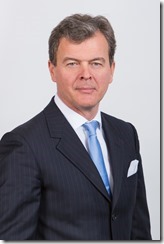
Rank in 2012: Not ranked in top dozen
Albrecht became CEO of Millicom in November 2012, with an ambitious plan to grow the company’s revenues by 40 per cent a year until 2017, to reach US$9 billion in five years.
Millicom is based in Sweden but its operations span across 15 countries in Latin America and Africa. It is highly profitable, with earnings of over US$2 billion on revenue of US$4.8 billion in 2012.
Albrecht has stated that combined with the shift to data, progress in mobile financial services and the launch of new media services almost weekly during 2013, Millicom is on track to deliver the transformation of the company into a digital lifestyle provider.
The company reported that its third quarter revenue in 2013 increased by 7.6 per cent to US$1.29 billion, while group EBITDA came in at US$459 million with an underlying margin of 38.6 per cent.
The company added a further one million new data users in Q3, bringing the penetration of mobile data within the mobile customer base to over 18 per cent.
Across its mobile networks, Millicom added close to 1.5 million net new mobile users during the quarter.
Rank in 2012: 5
Presiding over Africa’s largest mobile operator by subscriber numbers, Dabengwa has had to balance the pressures of competition with innovative ways to generate incremental revenue
In its Q3 operating update, MTN Group warned that its subscriber growth had been impacted by price competition and registration regulations. The South African market remained challenging in 2013 given regulatory and competitive actions, the operator said.
MTN Nigeria delivered a satisfactory performance in Q313, maintaining share, in a highly competitive market. Subscribers grew marginally to 55.6 million, which was impacted by the mandatory SIM registration deadline in July 2013.
MTN Irancell’s subscriber base declined by 1.7 per cent quarter-on-quarter to 41.3 million. The slow-down in gross connections was due to the weakening economy in a fully penetrated market and increased promotional activities by the competitor.
10 Scott Gegenheimer, Zain Group 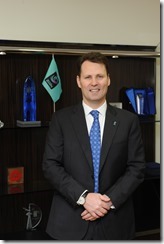
Rank in 2012: Not ranked in top dozen
Gegenheimer was appointed Zain Group CEO in December 2012 and in the year since has been instrumental in re-communicating the company’s strategy following a period of inertia that resulted from the sale of the majority of its assets in Africa in 2010
Gegenheimer’s arrival at Zain Group brought with it an acknowledgement that work needed to be done, and more importantly, a resolve on the part of the company’s executive management to work at turning things around in an active and determined fashion.
One example of Gegenheimer’s impact on the operator’s outlook is that for the first time in numerous quarters, the Zain Group management opened itself up to scrutiny from the analyst community by hosting conference calls and offering more details and insight into the company’s strategic direction. This included referencing a number of problem areas and discussing what plans are afoot to resolve them.
Strategically, Zain is looking to evolve its direction, focussing on four key areas: Customer experience; human capital development; operational efficiency; and growth through organic as well as inorganic (M&A) means. The company believes placing additional effort and resources in these areas will allow it to leverage the assets it already has in place while taking advantage of opportunities and developments that arise.
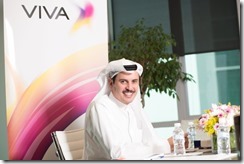 11 Salman Bin Abdulaziz Al-Badran, Viva Kuwait
11 Salman Bin Abdulaziz Al-Badran, Viva Kuwait
Rank in 2012: Not ranked in top dozen
A rapidly increasing customer base helped Viva Kuwait make an annual profit for the first time in 2012, four years after the STC Group affiliate launched services. In 2013, the company continued to make inroads into the Kuwait market
In October, Viva was awarded the ‘Best LTE Deployment’ award at the Telecoms World Awards – Middle East, acknowledging the company for its efforts to provide an integrated and complete Internet solution that allows customers to enjoy uninterrupted data streaming. Viva went on to announce its network upgrade to LTE Advance.
Viva reported a net profit of KWD3.9 million (US$13.69 million) for 2012, compared to a net loss of KWD14.4 million in 2011.
The operator, which competes with Zain and Ooredoo subsidiary Wataniya, said its customer base rose by 60 per cent to 1.6 million in 2012, enabling it to boost its market share to 29 per cent from 20 per cent.
STC owns 26 per cent of Viva, which has yet to list on the Kuwait bourse.
Rank in 2012: Not ranked in top dozen
Paltel posted a near 10 per cent increase in its Q3 profits, rising faster than its revenues or customer base growth
Paltel’s revenues in Q313 rose by 2.2 per cent to US$397 million, while net profit was up by 9.5 per cent to US$97 million. The customer base grew by 2.3 per cent.
Mobile subscribers grew in number from 2.59 million at the end of 2012 to 2.63 million at the end of Q313 reflecting a 1.7 per cent growth rate. Mobile subscriber ARPU decreased by 3.5 per cent to US$12.6.
The number of fixed line subscribers grew 401,000 at the end of the period, up 1.2 per cent year-on-year. ARPU for fixed line users grew by one per cent to US$ 19.3.

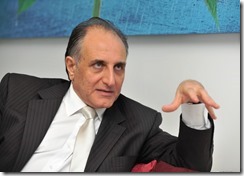
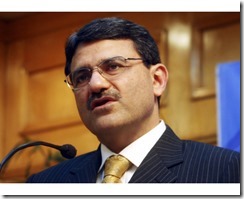
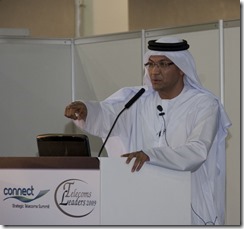
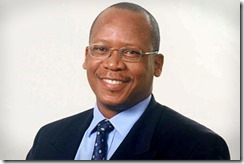
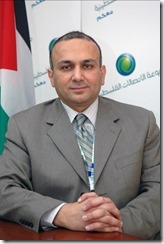




0 comments ↓
There are no comments yet...Kick things off by filling out the form below.
Leave a Comment